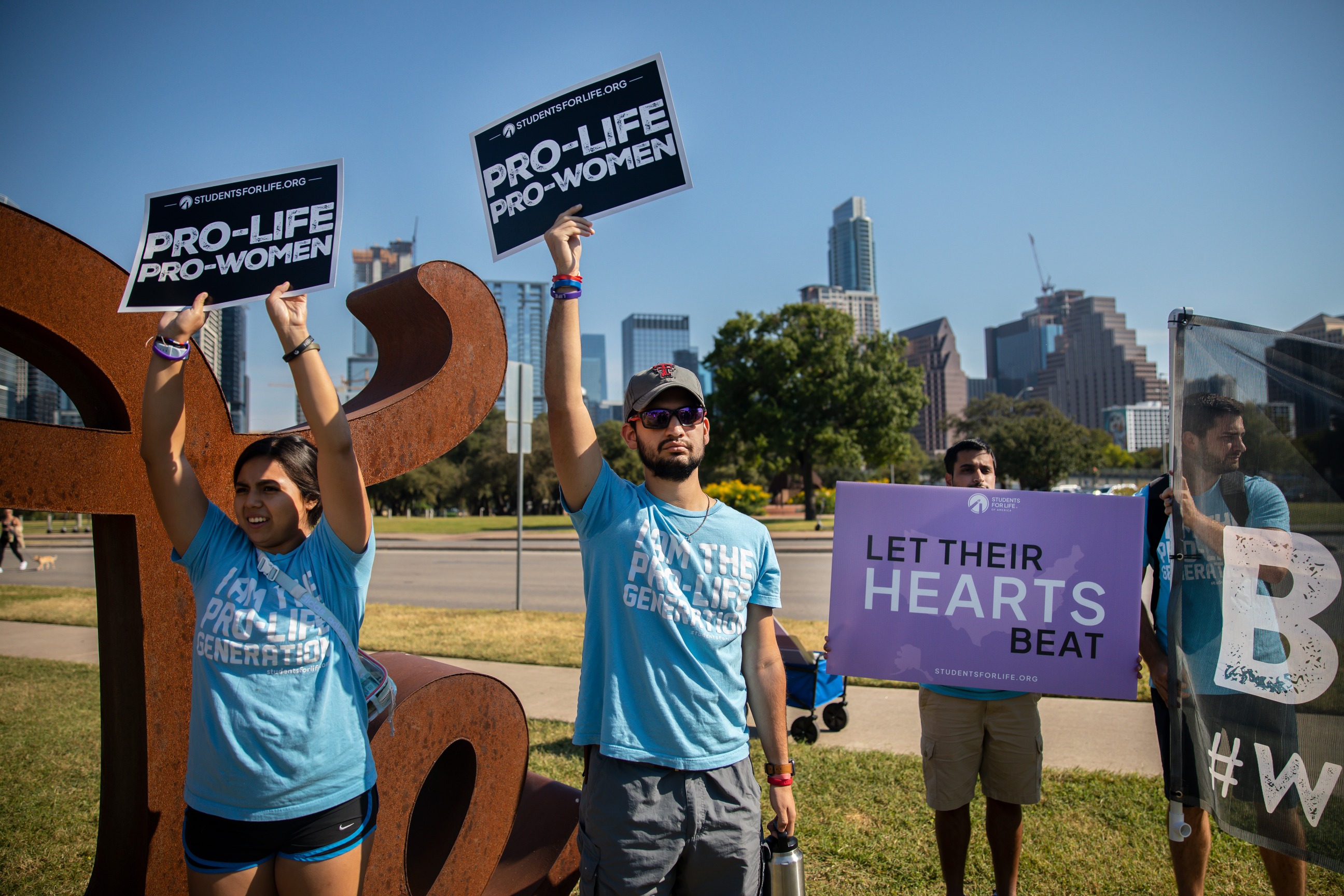The Texas Supreme Court issued a decision Friday allowing a lawsuit challenging the state’s multiple abortion bans to continue, but the court refused to block the bans as the legal challenge continues.
The lawsuit was filed last year by more than 20 women who say their lives were put in danger due to the state’s bans.
Texas has several abortion laws in effect prohibiting nearly all abortions, except in medical emergencies, which the laws do not define. Women filing the lawsuit said they were denied care despite having dangerous pregnancy complications.

Anti-abortion rights demonstrators protest during a Women’s March in Austin, Texas, Oct. 8, 2022.
Montinique Monroe/Bloomberg via Getty Images, FILE
While the lawsuit will be allowed to continue in a state trial court, the Supreme Court did not allow a temporary injunction on the bans while litigation continues. Lower court Judge Jessica Mangrum had granted the injunction against the bans as they relate to medical emergencies and fatal fetal diagnoses and denied the state’s request to throw out the case before the case was heard by the state Supreme Court.
In the court opinion issued Friday, justices pushed back against the claims made by women in the suit.
“Texas law permits a life-saving abortion. Under the Human Life Protection Act, a physician may perform an abortion if, exercising reasonable medical judgment, the physician determines that a woman has a life-threatening physical condition that places her at risk of death or serious physical impairment unless an abortion is performed,” Texas Supreme Court Justice Jane Bland wrote in the court’s majority opinion..
“The law permits a physician to intervene to address a woman’s life-threatening physical condition before death or serious physical impairment are imminent. Because the trial court’s injunction departed from the law as written without constitutional justification, we vacate its order,” the majority opinion said.

Amanda Zurawski speaks during a news conference held by members of the Pro-Choice Caucus and Democratic Women’s Caucus at the U.S. Capitol on March 7, 2024 in Washington, D.C.
Kent Nishimura/Getty Images, FILE
The court also wrote that the trial court’s block of the bans as it relates to medical emergencies “departed from the law as written without constitutional justification,” the majority opinion said.
“Texas law permits a life-saving abortion. A physician cannot be fined or disciplined for performing an abortion when the physician, exercising reasonable medical judgment, concludes (1) a pregnant woman has a life-threatening physical condition, and (2) that condition poses a risk of death or serious physical impairment unless an abortion is performed,” the court wrote in its opinion.
However, the court opinion recognized that at least some of the women filing the suit had life-threatening conditions.
“The State does not contest that at least some of these complications present life-threatening conditions for which an abortion may be indicated,” the court said.
The admission comes months after the state Supreme Court declined to allow Texas woman Kate Cox to receive an abortion for a pregnancy with severe anomaly and large risk of debilitating health complications, including loss of fertility.
The lead plaintiff in the case, Amanda Zurawski, described in her testimony last year going into sepsis after doctors said they could not induce labor because her fetus still had a heartbeat.
Zurawski said she was told she had an incompetent cervix, premature dilation of her cervix and would miscarry. Her water broke later that evening but she did not miscarry until three days later, she said.
“I went from feeling physically OK to shaking uncontrollably. I was freezing cold even though it was 110 degrees out. My teeth were chattering violently. I couldn’t get a sentence out. My husband Josh asked me how I was feeling on a scale from 1 to 10. I didn’t know the difference between 1 and 10 — which one was higher,” Zurawski said.
This is a developing story. Please check back for updates.

